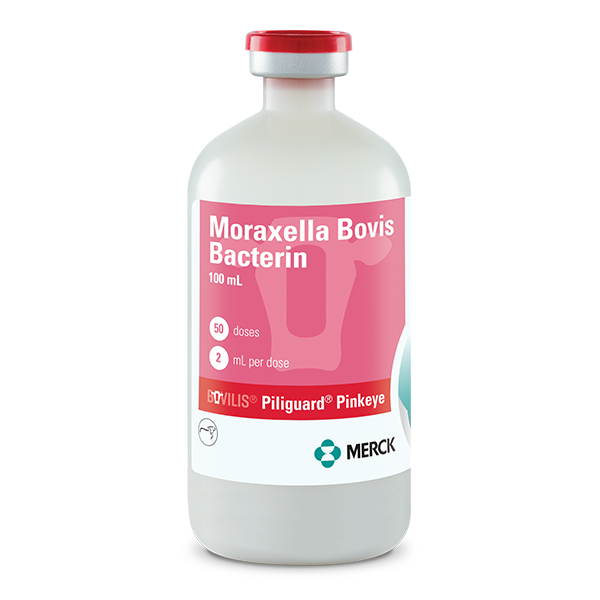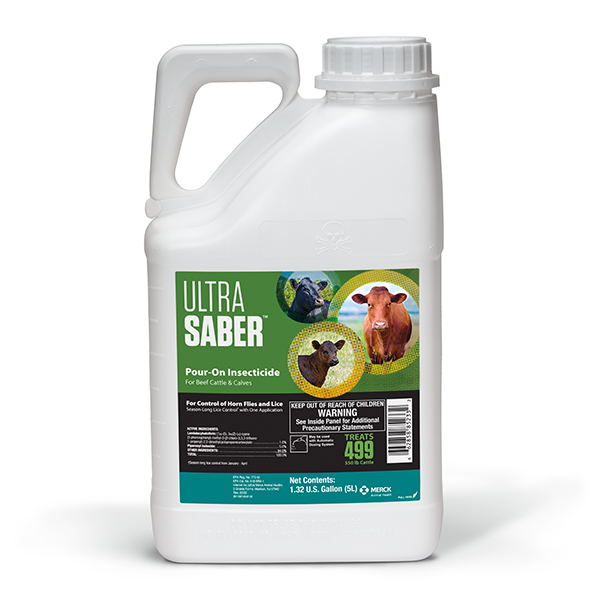
Put a stop to the pain of pinkeye.
Pinkeye in cattle is a highly contagious disease that doesn’t just hurt the animals. If introduced into an unvaccinated herd, the consequences can be costly. However, with a simple three-pronged approach, you can help mitigate pinkeye and its damaging effects.
Perspectives on Pinkeye
Given the complex nature of pinkeye in cattle, Merck Animal Health brought together a group of renowned veterinarians and researchers well-versed in the science of pinkeye to explore the disease further – primary causes, economic impact, current prevention and treatment methods, and potential future solutions. The following report and videos highlight these perspectives.

Watch Videos

A Disease Complex

Getting the Most Out of Your Vaccination Strategy

When to Treat
The pain of pinkeye doesn’t just hurt cattle.
Pinkeye in cattle is caused by bacterial pathogens that infect the surface of the eye. The bacteria are covered in hairlike structures called pili, which allow them to attach to the eye and colonize – causing inflammation of the eyelid as well as the eyeball. If left unaddressed, the cornea may develop a sore, resulting in pain and possible blindness.
Once pinkeye is established in a few animals, face flies all but ensure its rapid spread. This is bad news for the animals that will experience the physical pain of pinkeye. And bad news for producers who will feel the financial burn.
No matter the operation type, pinkeye that’s left unchecked can be economically devastating.

In beef cattle, pinkeye losses can exceed $100 per incidence.1

In dairy cattle, milk lost due to antibiotic use can cost $352 per head.1
And that’s not the end of it.
Pinkeye in cattle impacts everything from calving to weaning weights and market value.
- Culled beef cattle can cost as much as $337 per animal.1
- Post-weaning cattle had lower performance with reduced ADG, 365-day weight and final weight.2
- Affected calves are 30-40 lbs. lighter at weaning compared to healthy calves.2
- At auction, calves with pinkeye often bring $10 less per hundredweight than their herdmates.3
Pinkeye Prevention in Cattle:
A three-pronged approach is key to pinkeye prevention.
Before pinkeye rears its head in your herd, there are a series of steps you can take to control this contagious and costly disease. These steps include a pinkeye vaccine for cattle, fly control and environmental management.
These three elements work together to achieve pinkeye prevention in cattle. Leaving out even one of them can compromise the entire control effort.
STEP 1
Cattle Pinkeye Vaccine
Because pinkeye is caused when bacterial organisms (such as Moraxella bovis and Moraxella bovoculi) infect the surface of the eye, the first leg of proper control is vaccination.
The most effective cattle pinkeye vaccine will be one that is able to stimulate antibody production in tears, which bathe the eye, limit infection and reduce the severity of lesions. For adequate immunity development, plan to vaccinate animals three to six weeks prior to the onset of pinkeye season.
M. bovis has long been understood to be a major cause; however, a recent study found up to 80% of cases include M. bovoculi alone or along with M. bovis.4
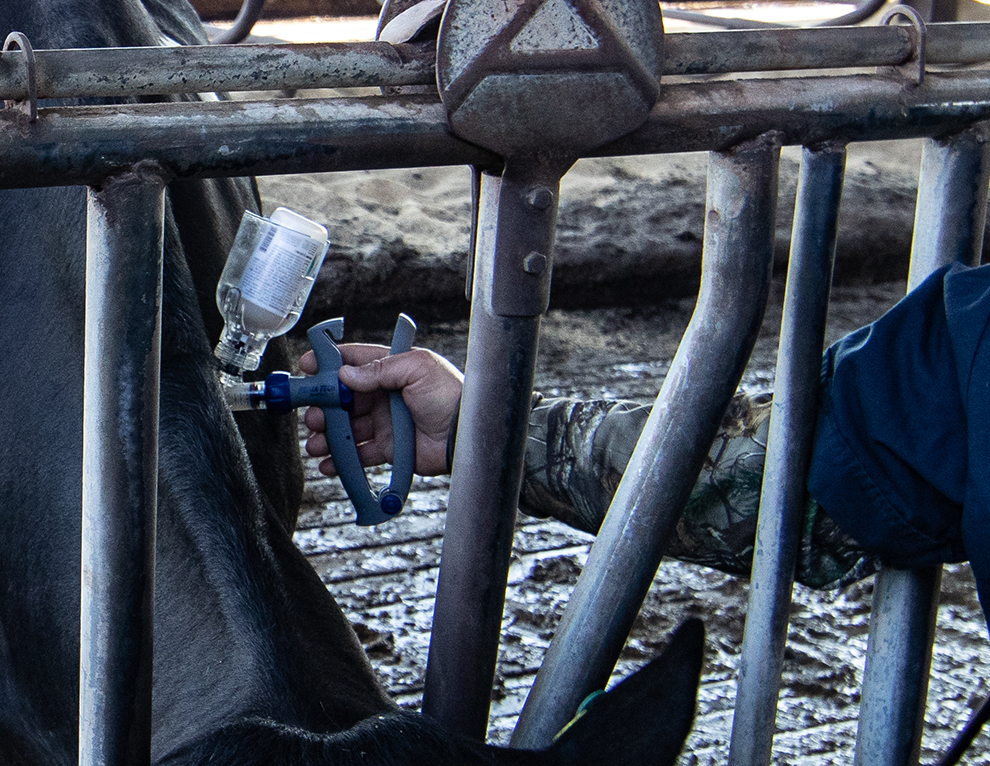
STEP 2
Fly Control
Pinkeye in cattle spreads quickly through bacteria-carrying face flies, which is what makes fly control a critical component of pinkeye prevention in cattle. Face flies can travel long distances between herds and expose cattle to many different strains.
There are several management practices that can reduce the impact flies have on the spread of pinkeye:
- Treat cattle of all ages with a long-lasting and easy-to-administer insecticide.
- For calves and cows (dairy cows under 21 months of age), apply one fly tag in each ear in addition to a low-volume pour-on. When the ear tags lose their effectiveness, remove and apply a final dose of a low-volume pour-on.
- For premise control, use an insecticide that works on a wide variety of surfaces in and around livestock facilities.
- Use additional measures as needed, such as back rubbers, oilers and other devices.
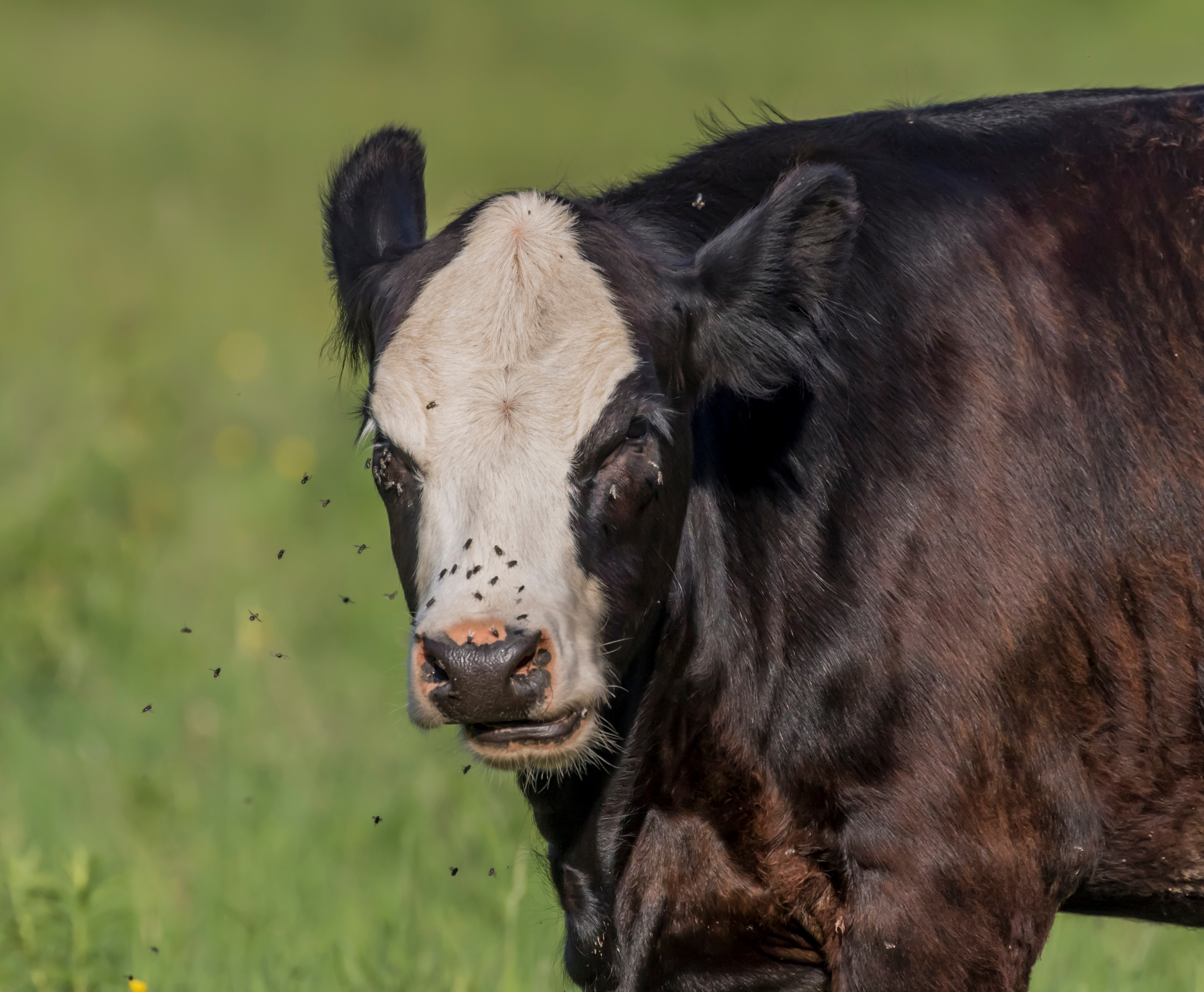
STEP 3
Environmental Management
Pasture Management
Pollen, seed heads, dust and UV light all cause irritation, allowing infectious pinkeye organisms to attach to the surface of the eye. These irritants also cause the eye to water, which attracts flies. And we already know the role flies play in the spread of pinkeye in cattle.
Facilities Management
Here, sanitation is key. Promptly eliminating organic debris such as wet, rotting hay, straw, feed, silage and manure will help with pinkeye prevention in cattle by keeping flies at bay. Additionally, premise sprays and pour-on insecticides can be used in facilities and hutches to knock down flies during calves’ critical growing cycle.
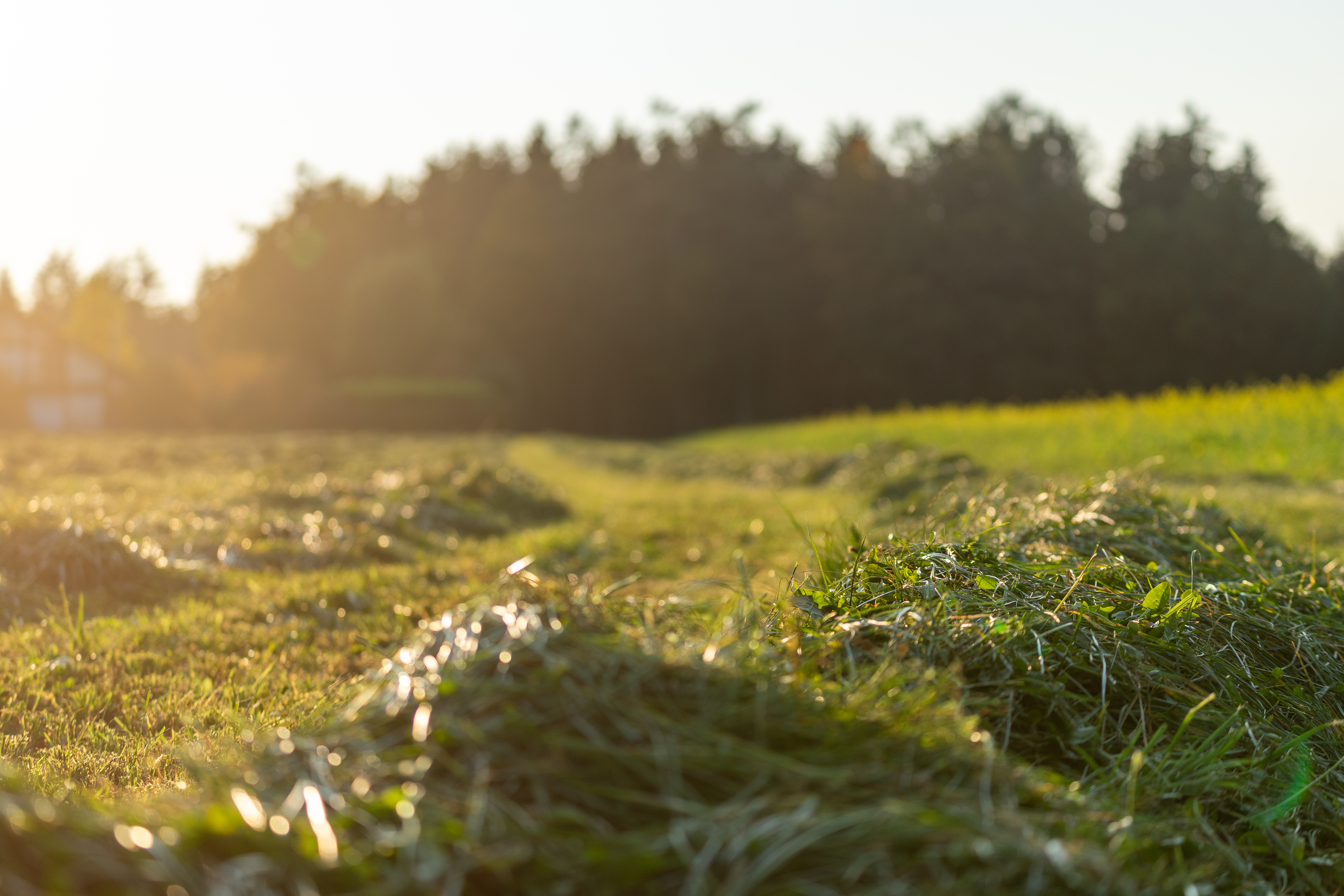
See how the different options stack up.
Whether you’re just looking for pinkeye prevention in cattle or something more comprehensive, here’s a quick look at how Merck Animal Health’s different options for pinkeye protection compare.
Cattle Pinkeye Vaccines
Pinkeye causes pain, stress and weight loss in cattle. Selecting a pinkeye vaccine for cattle is an important measure to take to prevent this disease from blindsiding your ROI.
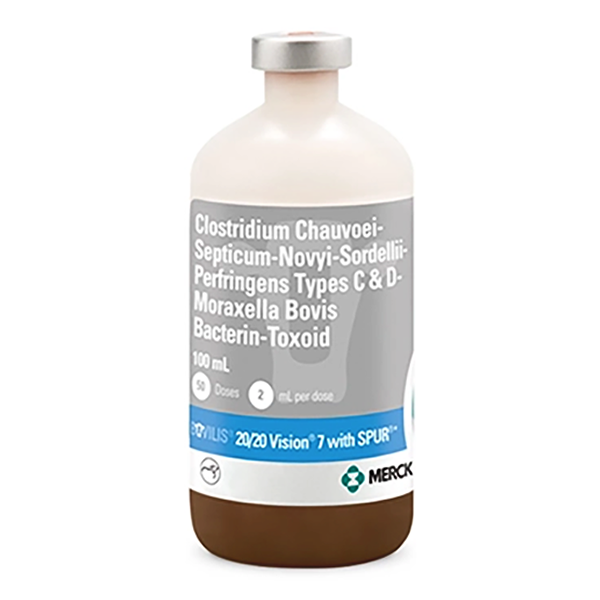
For use in healthy cattle as an aid in preventing Clostridium chauvoei, septicum, novyi, sordellii and perfringens (Types C & D), and Moraxella bovis.
Cattle Insecticides
Used in conjunction with a pinkeye vaccine for cattle, insecticides are an important component of prevention.
Available in a variety of formulations, fly control can be customized to fit your production system.
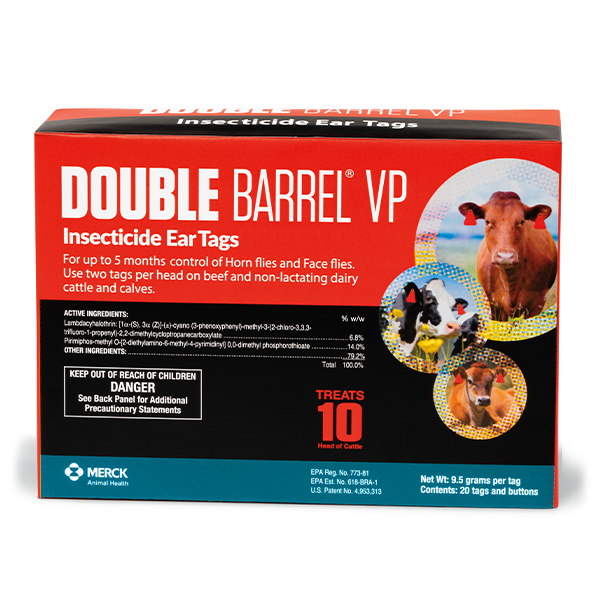
Up to five months’ control of horn flies and face flies using two tags per head on beef and non-lactating dairy cattle and calves.
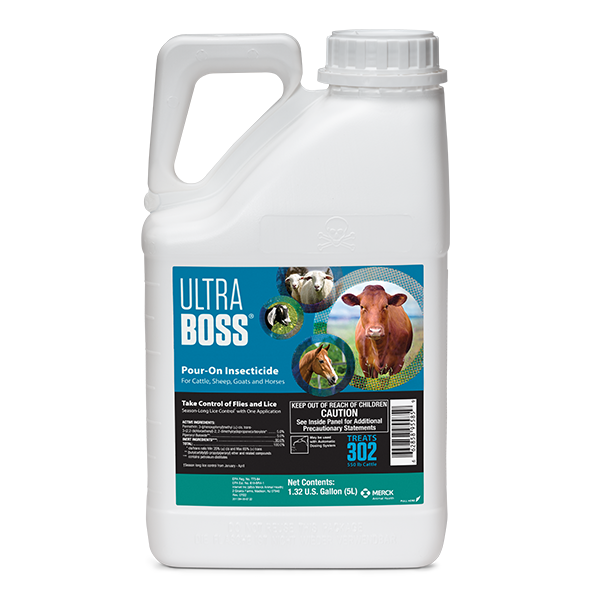
A broad-spectrum pour-on insecticide for horn flies, face flies and lice for dairy cattle, beef cattle and calves, sheep, horses and goats.
Pinkeye in Cattle: Studies and Detailers
Access any of the pieces in the library below for additional information on the prevention and treatment of pinkeye in cattle.
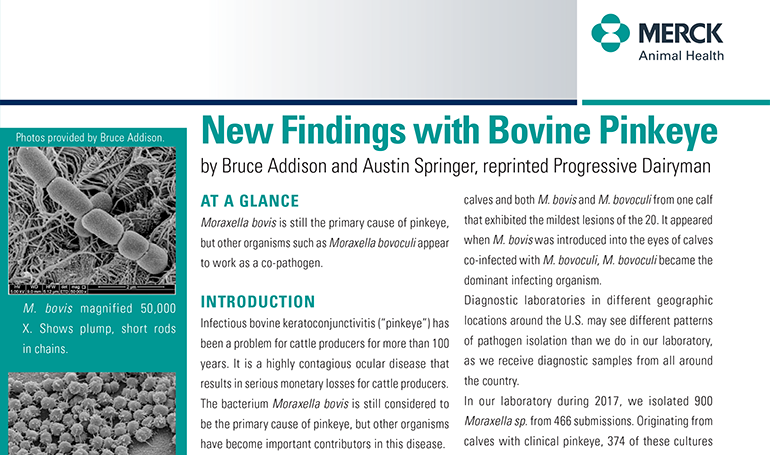
New Findings with Bovine Pinkeye
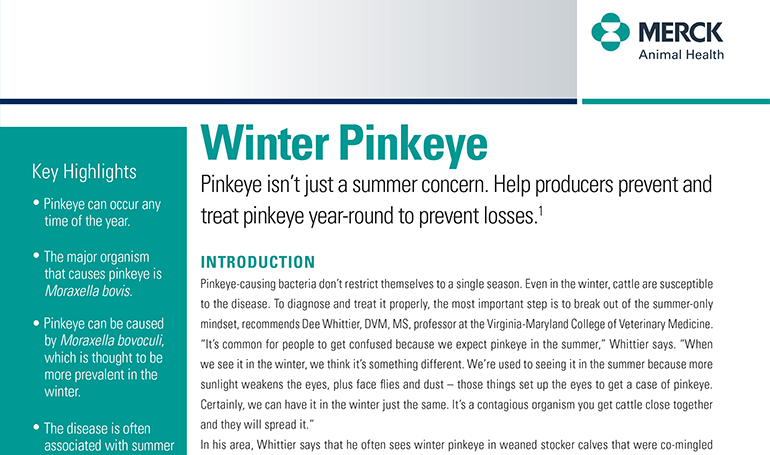
Winter Pinkeye
1. Merck Pinkeye Quantitative Survey, 2021, Farm Journal, Lenexa, KS.
2. Arnold M, et al. Infectious Bovine Keratoconjunctivitis (Pinkeye) in Cattle. University of Kentucky College of Agriculture. 2012.
3. Bartos A. Culturing pinkeye lesions: Moraxella bovis vs. Moraxella ovis. Bovine Veterinarian. 2002.
4. Huston C. Pinkeye in Cattle. Mississippi State University. 2014.
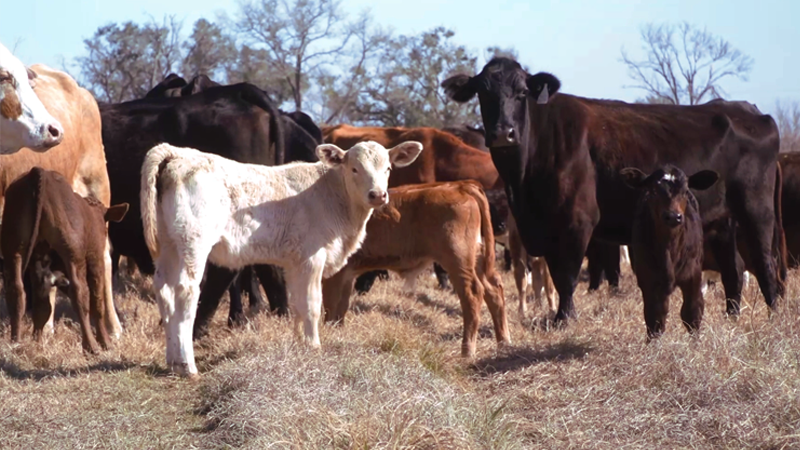
See more solutions that can help improve herd health and boost performance for cow-calf and stocker operations.
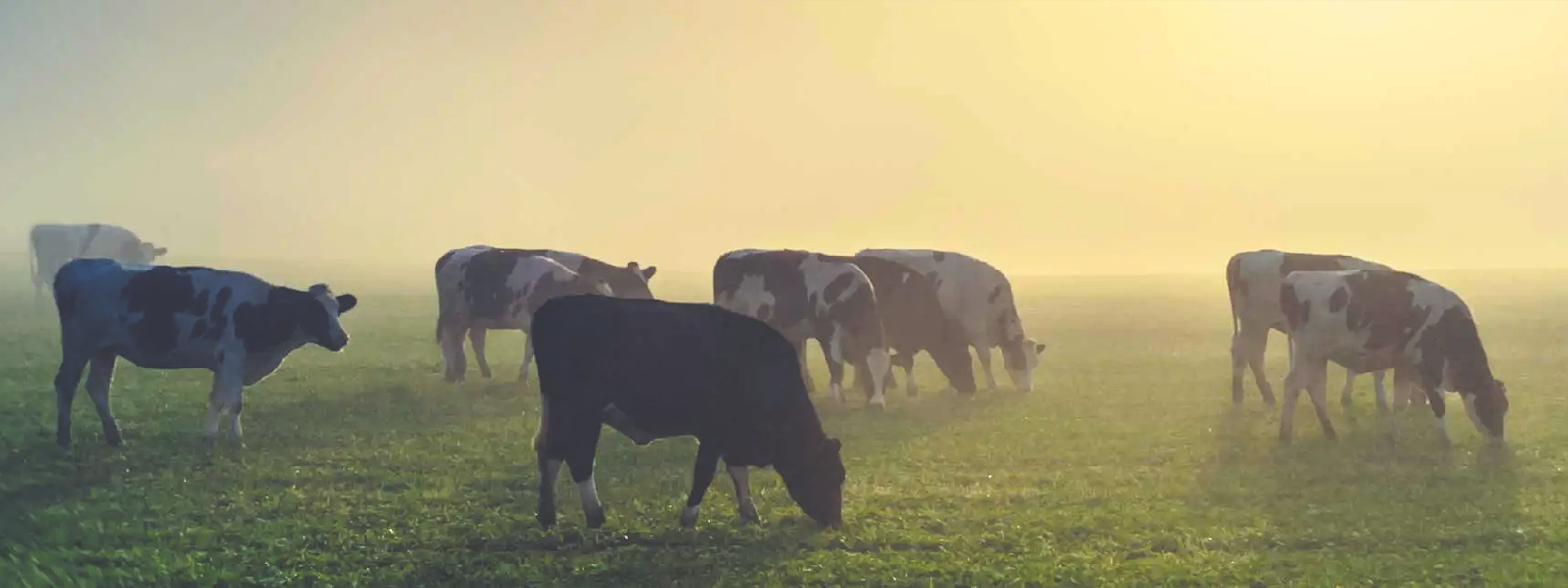
An effective deworming program can help you make the most of your vaccination protocol.
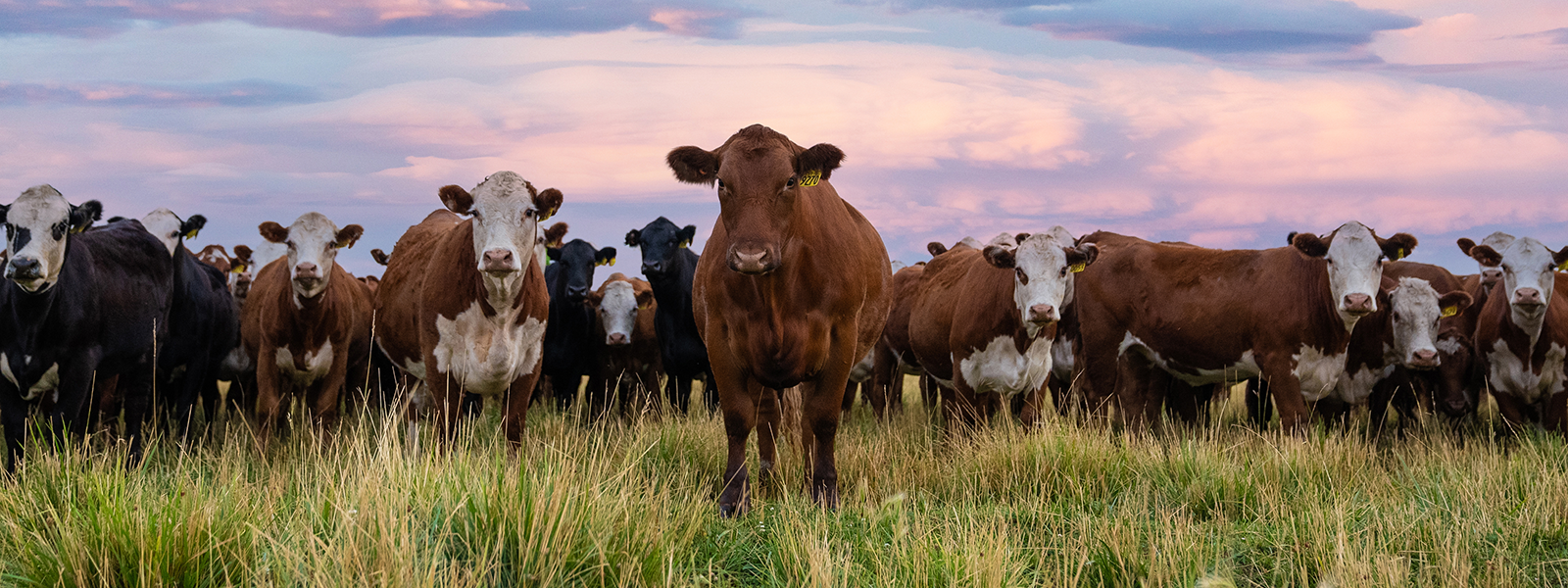
Get the latest updates! Sign up to receive cattle health management insights, industry news and more sent straight to your inbox.

